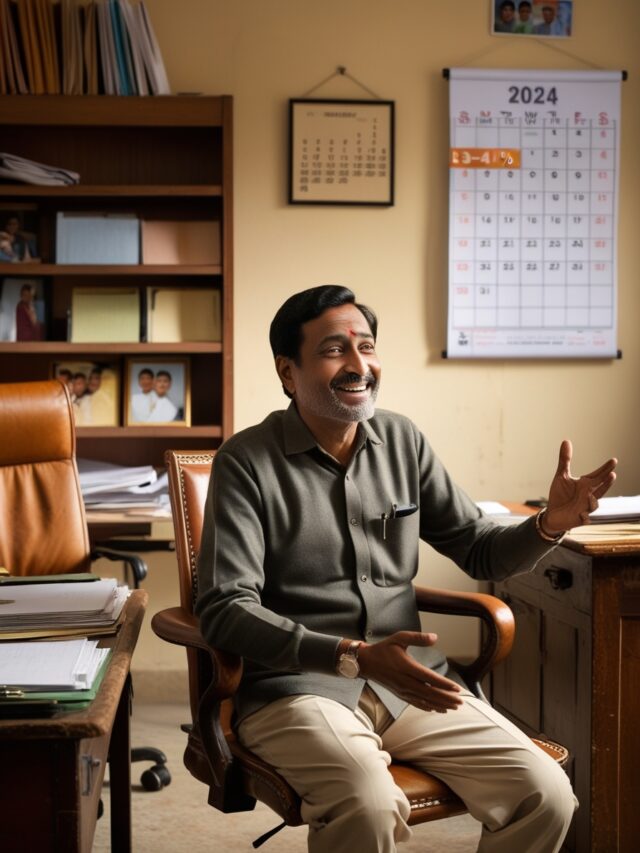1. Identify the misl of Punjab to which Maharaja Ranjit Singh belonged:
- Phulkian Misl
- Nakai Misl
- Bhangi Misl
- Sukerchakia Misl
Show Answer
Answer: Sukerchakia Misl
Maharaja Ranjit Singh was associated with the Sukerchakia Misl, which held influence in Hafizabad and Gujranwala districts of Punjab. He skillfully united the twelve misls and established a united Sikh kingdom.
2. Under whose governance did Bengal gradually gain independence from Mughal control?
- Alivardi Khan
- Murshid Quli Khan
- Siraj-ud-daulah
- Safdar Jung
Show Answer
Answer: Murshid Quli Khan
Bengal gradually gained independence from Mughal control under the rule of Murshid Quli Khan. He began as the Diwan of Bengal under Aurangzeb but eventually achieved virtual independence while still sending tribute to the Mughal emperor.
3. Who deposed the family of Murshid Quli Khan and became the Nawab himself?
- Alivardi Khan
- Siraj-ud-daulah
- Saadat Khan
- Asaf ud Daulah
Show Answer
Answer: Alivardi Khan
In 1739 CE, Alivardi Khan deposed the family of Murshid Quli Khan and became the Nawab of Bengal. Under his rule, Bengal experienced stability, peace, and remarkable progress in agriculture, trade, and industry.
4. Who succeeded Alivardi Khan as the Nawab of Bengal?
- Murshid Quli Khan
- Saadat Khan Burhan ul Mulk
- Asaf ud Daulah
- Siraj-ud-daulah
Show Answer
Answer: Siraj-ud-daulah
The successor of Alivardi Khan was Siraj-ud-daulah, also known as Mirza Muhammad Siraj-ud-Daulah. He was the last independent Nawab of Bengal and met defeat in the Battle of Plassey in 1757 CE.
5. Which individual founded the provincial kingdom of Awadh?
- Saadat Khan Burhan ul Mulk
- Murshid Quli Khan
- Asaf ud Daulah
- Siraj-ud-daulah
Show Answer
Answer: Saadat Khan Burhan ul Mulk
Saadat Khan Burhan ul Mulk was appointed as the subadar of Awadh in 1722. The weakened central control of the Mughals allowed for the emergence of the provincial kingdom of Awadh under the governance of Saadat Khan Burhan ul Mulk.
6. Who succeeded Burhan ul Mulk as the leaders of Awadh?
- Safdar Jung
- Asaf ud Daulah
Choose the correct option:
- Only 1
- Only 2
- Both 1 & 2
- Neither 1 & 2
Show Answer
Answer: Both 1 & 2
Before his demise, Saadat Khan Burhan ul Mulk established his position as hereditary. The successors of Burhan ul Mulk were Safdar Jung and Asaf ud Daulah, both of whom brought long-term administrative stability to Awadh province.
7. During the reign of the nawabs, which centers emerged as hubs of cultural excellence?
- Faizabad
- Lucknow
- Delhi
Choose the correct option:
- Only 1 & 2
- Only 1 & 3
- Only 2 & 3
- Only 3
Show Answer
Answer: Only 1 & 2
Under the nawabs’ rule, Faizabad and later Lucknow emerged as centers of cultural excellence on par with Delhi. These cities flourished in arts, literature, and crafts, and the dance form Kathak evolved as a result of this cultural synthesis.
8. Which place became a prominent center of Sikh activity during the 18th century?
- Bhatinda
- Amritsar
- Lahore
- None of the above
Show Answer
Answer: Amritsar
During the 1720s and 1730s, Amritsar became a prominent center of Sikh activity, as the Sikh resistance against Mughal authority persisted even after the suppression of the Sikhs under Banda Bahadur.
9. Who is considered the organizer of the Sikh Confederacy and the Dal Khalsa?
- Jassa Singh Ahluwalia
- Banda Bahadur
- JahangKapur Singhir
- Ranjit Singh
Show Answer
Answer: Kapur Singh
Nawab Kapur Singh is regarded as a significant figure in Sikh history. Under his leadership, the Sikh community navigated one of its darkest periods, and he established a robust revenue and military system.
10. Which of the following founded the kingdom of Kapurthala?
- Jassa Singh Ahluwalia
- Banda Bahadur
- Kapur Singh
- None of the above
Show Answer
Answer: None of the above
After the death of Zakariya Khan in 1745 CE, the balance shifted further in favor of the Sikh warrior leaders, such as Jassa Singh Ahluwalia. However, it was not Jassa Singh but Maharaja Ranjit Singh who founded the kingdom of Kapurthala.
Q11: Which of the following founded the kingdom of Kapurthala?
1. Jassa Singh Ahluwalia
2. Banda Bahadur
3. Kapur Singh
4. None of the above
Show Answer
Answer: 1
Explanation: Jassa Singh Ahluwalia, initially known as Jassa Singh Kalal, was a prominent Sikh leader who hailed from the Kalal community. He played a significant role in Sikh history and is recognized as the founder of the Kapurthala State, one of the Sikh princely states in Punjab. His association with the village of Ahlu led him to adopt the name Ahluwalia.
Q12: Under the reign of which of the following king, the territories and towns that had been taken by the Sikhs were recovered?
1. Ahmad Shah
2. Timur Shah
3. Abdus Samad Khan
4. Zakariya Khan
Show Answer
Answer: 2
Explanation: Timur Shah was the son and successor of Ahmad Shah Durrani, the founder of the Durrani Empire. During his rule from 1772 to 1793, the Durrani Empire managed to recover some territories and towns that had previously been taken by the Sikhs, including Multan. This period saw fluctuations in control over these regions in northern India.
Q13: Which of the following was the grandson of Charhat Singh Sukerchakia?
1. Jassa Singh Ahluwalia
2. Kapur Singh
3. Ranjit Singh
4. Banda Bahadur
Show Answer
Answer: 3
Explanation: Ranjit Singh, the grandson of Charhat Singh Sukerchakia, was a prominent Sikh leader who successfully united various Sikh principalities and groups into a larger and more powerful entity. His Sikh kingdom, which had Lahore as its capital, represented the culmination of nearly a century of Sikh resistance and rebellions against Mughal rule, establishing a Sikh empire in the early 19th century.
Q14: Which of the following states rose to prominence in the Deccan in the later half of the 18th century?
1. Travancore
2. Mysore
Choose the correct option:
1. Only 1
2. Only 2
3. Both 1 & 2
4. Neither 1 & 2
Show Answer
Answer: 3
Explanation: In the latter half of the 18th century, several Indian states, notably Travancore in Kerala and Mysore, rose to prominence by consolidating their power through control of sea access and ports. These states strategically utilized their coastal territories to enhance their influence and economic strength.
Q15: Which ruler ruled the Arcot principality around the 1700s?
1. Sadullah Khan
2. Haidar Ali
3. Tipu Sultan
4. Nizam-ul-Mulk
Show Answer
Answer: 1
Explanation: In the southern region of India during this period, there were three prominent and formidable powers. These were the Marathas, Sadullah Khan of Arcot (which is now part of Karnataka), and the Nizam-ul-Mulk of Hyderabad. By the 1740s, the Nizam-ul-Mulk had successfully consolidated his position in Hyderabad, contributing to the complex political landscape of the South.
Q16: Martanda Varma ruled Travancore during which of the following period?
1. 1719 CE to 1748 CE
2. 1729 CE to 1758 CE
3. 1709 CE to 1738 CE
4. 1629 CE to 1658 CE
Show Answer
Answer: 2
Explanation: The kingdom of Travancore, situated in the southern state of Kerala, was established and ruled by leaders like Martanda Varma and Rama Varma. Martanda Varma’s rule began around 1729 and continued until 1758, marking a significant period in the history of Travancore.
Q17: Which of the following was the first to initiate the policy of taking part in the quarrels of Indian Princes with a view to acquire territories?
1. Lord Clive
2. Dupleix
3. Lord Chelmsford
4. Warren Hastings
Show Answer
Answer: 2
Explanation: Joseph François Dupleix was a prominent French colonial administrator who is often credited with initiating the policy of European involvement in Indian conflicts to acquire territories. He served as the governor-general of the French possessions in India from 1742 to 1754, playing a crucial role in French colonial ambitions in India.
Q18: Which one among the following was not true about Marthanda Verma, the Kerala king?
1. He ruled over Travancore
2. He subdued the feudatories
3. He gave heavy bribes to the European officers to maintain peace
4. He organised a strong modern army
Show Answer
Answer: 3
Explanation: Anizham Thirunal Veerabaala Marthanda Varma was a significant ruler of Travancore, reigning from 1729 until his death in 1758. He is notable for his victory in the Battle of Colachel in 1741, where his forces defeated the Dutch, making him the only Indian king to defeat a European armed force in a battle during that period.
Q19: The independent state of Bengal was founded by which of the following king?
1. Ilias
2. Hussain Shah
3. Murshid Quli Khan
4. Alivardi Khan
Show Answer
Answer: 3
Explanation: Murshid Quli Khan played a key role in establishing the independent state of Bengal. In 1719, he effectively united his military force and consolidated his position as the ruler of the region. He also renamed the capital city from Makhsusabad to Murshidabad in honor of his own name, marking a significant moment in the history of Bengal.
Q20: Which of the following statements are correct about the State of Arcot in 18th-century South India?
1. Daud Khan Panni and Saadatullah Khan were the founders of the dynasty that ruled Arcot.
2. Arcot became the site of a protracted struggle between the English and Dutch East India Companies from the 1740s.
3. Decentralisation was a key feature of the State of Arcot in the 18th century.
4. The other major State to emerge in South India at this time was Mysore.
Select the correct option from the codes given below:
1. 1 and 2 only
2. 1, 2, and 4
3. 3 and 4 only
4. 2 and 4 only
Show Answer
Answer: 2
Explanation: The dynasty that ruled Arcot was founded by Daud Khan Panni and Sa’adatullah Khan. Arcot, located in present-day Tamil Nadu, was a region marked by a protracted struggle between the English and Dutch East India Companies starting in the 1740s. Simultaneously, the state of Mysore, led by figures like Hyder Ali and later Tipu Sultan, emerged as another major power in South India during this period.
Q21: Which of the following founded the independent state of Awadh?
1. Shujauddaula
2. Aasfuddaula
3. Safdarjung
4. Saadat Khan
Show Answer
Answer: 4
Explanation: Saadat Khan, commonly known as Burhan-ul-Mulk, played a pivotal role in establishing the independent state of Awadh. He had initially been involved in a conspiracy against the Sayyid brothers, who held power in the region, and as a result, he was expelled from their court. Subsequently, he managed to establish his rule in Awadh.
Q22: Which of the following Nizams of Hyderabad secured the protection of French General Bussy in the 18th century to protect his territories?
1. Nasir Jung
2. Muzaffar Jung
3. Salabat Jung
4. Asaf Jah II
Show Answer
Answer: 3
Explanation: Salabat Jung, the 4th Nizam of Hyderabad, was the third son of Nizam-ul-Mulk. After the death of Nizam-ul-Mulk, there were disputes over the succession, and various European powers, including the Marathas, French, and English, sought to influence the outcome. Salabat Jung secured the protection and support of the French general Bussy in 1751-52, making Hyderabad more formidable and challenging to eliminate as long as the French general remained in the region.
Q23: In the 18th century, the Ijara system of land revenue collection was first introduced in which of the following regions?
1. Gujarat
2. Bengal
3. Carnatic
4. Punjab
Show Answer
Answer: 2
Explanation: The Ijara system of land revenue collection was first introduced in Bengal. This system involved leasing land revenue collection rights to individuals or contractors in exchange for a fixed sum or a percentage of the revenue collected. It was one of the revenue systems implemented during the Mughal period and played a significant role in Bengal’s economic and administrative history.
Q24: British achieved political power in India after which of the following?
1. Battle of Plassey
2. Battle of Wandiwash
3. Battle of Panipat
4. Battle of Buxar
Show Answer
Answer: 1
Explanation: The Battle of Plassey in 1757 marked a turning point in Indian history, as it resulted in a decisive victory for the British East India Company over the Nawab of Bengal and his French allies. This victory consolidated the Company’s political power and presence in Bengal, which served as a launching point for the Company’s expansion across India in the following century. The battle was a significant step in the process of British colonial dominance in India.







